Navigating hilly terrain on an electric scooter can be a thrilling experience – but only if you have the right ride. Whether you’re commuting to work or enjoying a weekend adventure, not all scooters are built to tackle those steep inclines and rough terrain. If you’re in the market for an e-scooter that can handle hills with ease, look no further.
In this guide, we’ll walk you through everything you need to know about choosing the perfect electric scooter for hills. From motor power and torque to battery life and suspension, we’ve got you covered with the latest top recommendations. Get ready to conquer any slope with confidence!
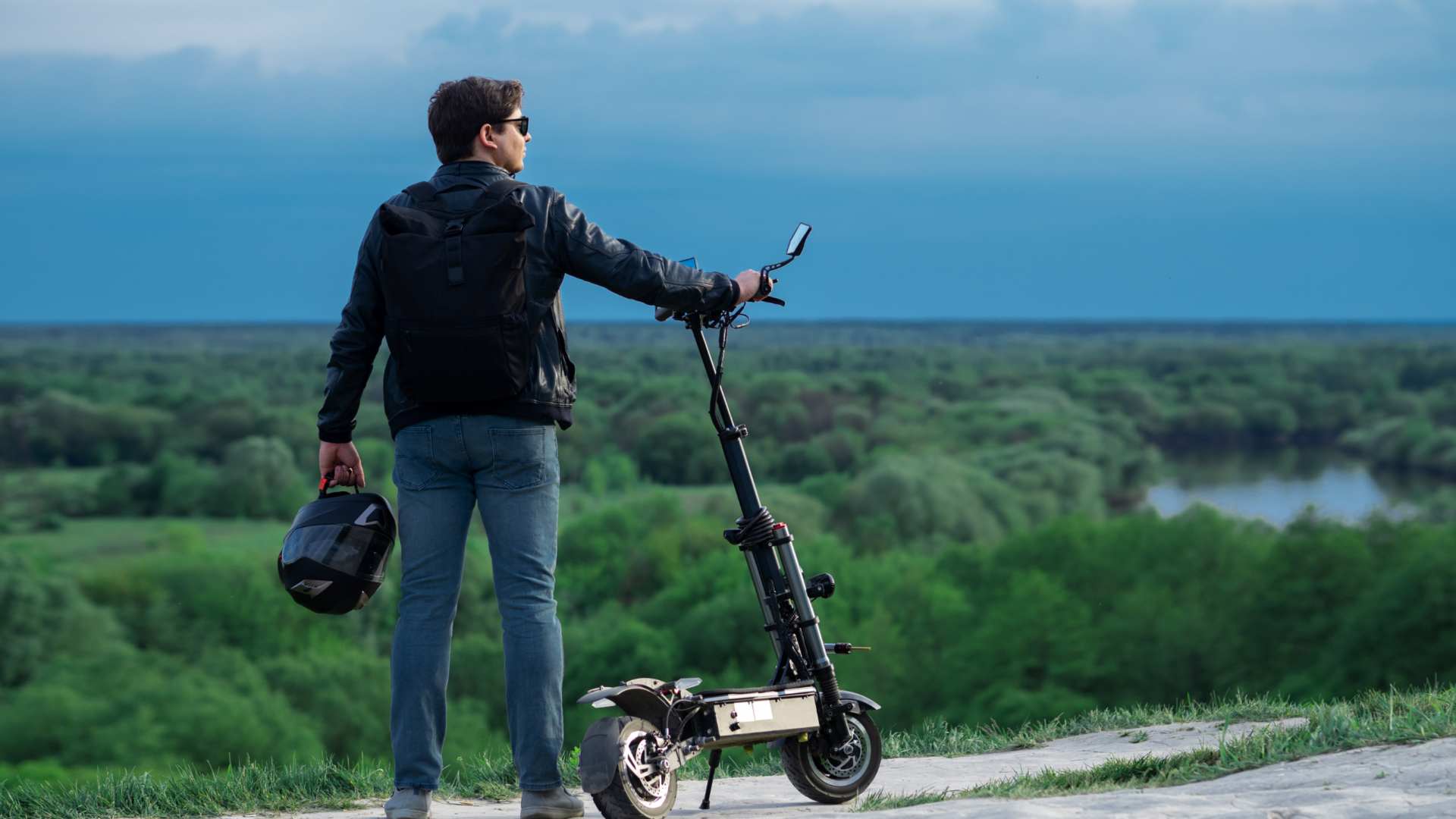
Choosing the Right Electric Scooter for Hills
Selecting an electric scooter for hills involves evaluating several critical factors. Each element plays a vital role in ensuring your purchased model can tackle steep slopes and rugged terrains. Here’s a comprehensive look at what to consider:
Motor Power
A robust motor is essential to effectively handle hill climbs. Here’s what you should look for:
- Wattage: A motor with at least 500W is recommended. For steeper inclines, opt for motors with 800W or more.
- High Torque: The torque determines how well the scooter can climb hills. High torque is crucial for providing the necessary power to ascend slopes.
Battery Life and Range
Battery life directly impacts how far and how long your scooter can operate, particularly over hilly terrain.
- Capacity: Look for a model with a higher battery capacity. Bigger batteries usually offer longer ranges, which is especially important for continuous uphill travel.
- Regenerative Braking: This feature helps extend the battery life by converting some of the kinetic energy back into electrical energy when braking or descending.
Suspension Systems
A good suspension system will absorb shocks from uneven and rugged terrains, providing a smoother ride:
- Type of Suspension: Dual suspension systems (both front and rear) are highly recommended for hill climbing. They provide better shock absorption compared to single or no suspension.
- Quality: Ensure the suspension components are high-quality and durable to handle the extra strain from hill climbing.
Weight Capacity
It’s essential to select a scooter that can support your weight along with any additional load:
- Maximum Load: Check the manufacturer’s weight limit. Exceeding this limit can affect the scooter’s performance and speed, especially on hills.
Additional Safety Features
Safety should always be a priority when riding on hilly terrain:
- Braking System: Effective brakes are crucial for controlling speed during descents. Look for models with both disc and regenerative brakes.
- Lighting: Proper lighting ensures visibility during early mornings, late evenings, or foggy conditions. Consider scooters with bright front and rear lights.
Making an informed choice based on these factors will ensure you’re equipped to handle hilly terrain effectively. Next, we’ll discuss the top features to look for in hill-climbing electric scooters to help narrow down your options further.
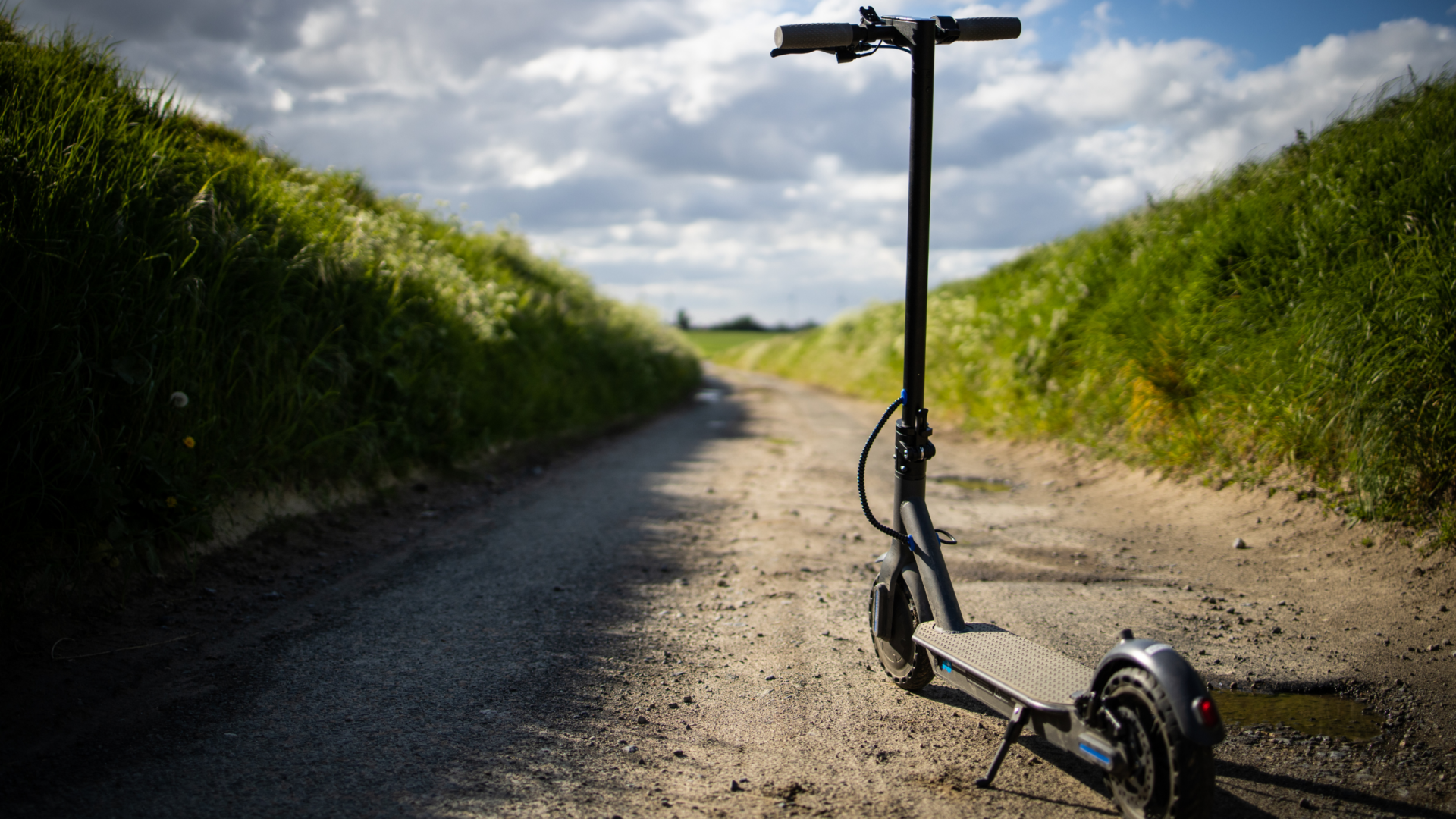
Top Features to Look for in Hill-Climbing Electric Scooters
Selecting a scooter that excels in hill climbing requires attention to several critical features. These components ensure optimal performance and safety while navigating steep inclines. Here’s an in-depth look at the top features to consider:
Powerful Motors and High Torque
A high-performance motor is indispensable for hill climbing. Here’s why:
- Motor Power: Aim for scooters with motors rated at 500W or higher. Powerful motors (800W or more) provide better acceleration and speed maintenance on slopes.
- High Torque: Torque is essential for quick starts and maintaining speed on inclines. Scooters with higher torque offer superior hill-climbing capabilities.
Optimal Battery Life and Range
Battery performance is critical for long rides and steep climbs:
- Battery Capacity: High-capacity batteries, measured in Watt-hours (Wh), generally provide longer ranges, reducing the need for frequent recharges.
- Long-Range Capability: Scooters designed for extended travel (20+ miles per charge) ensure you can tackle long, hilly routes without running out of power.
Effective Suspension Systems
Comfort and stability are crucial when riding on uneven, hilly terrain:
- Dual Suspension: Front and rear suspension systems absorb shocks from uneven surfaces, providing a smoother ride.
- Quality and Adjustability: High-quality, adjustable suspension systems allow customization for different terrains, enhancing ride comfort.
Weight Capacity and Build Quality
A robust scooter can support additional load and withstand harsh conditions:
- Build Materials: Look for models made from durable materials like aluminum or steel to ensure longevity.
- Weight Capacity: Ensure the scooter can comfortably support your weight and any additional gear or luggage you might carry.
Advanced Braking Systems
Reliable braking is essential, especially for descents:
- Disc Brakes: Opt for scooters with front and rear disc brakes for efficient stopping power.
- Regenerative Braking: This feature not only enhances braking efficiency but also helps recharge the battery during descents.
Enhanced Safety Features
Safety should never be compromised, particularly on hilly terrains:
- Lighting: Bright front and rear lights improve visibility during low-light conditions, ensuring safety during early morning or evening rides.
- Reflectors and Horns: Additional safety features like reflectors and an audible horn further enhance visibility and awareness, keeping you safe on the roads.
Identifying a scooter with these features will ensure you have the best possible experience when navigating hilly terrain. With these considerations in mind, let’s move on to our top recommendations for the best hill-climbing scooters.
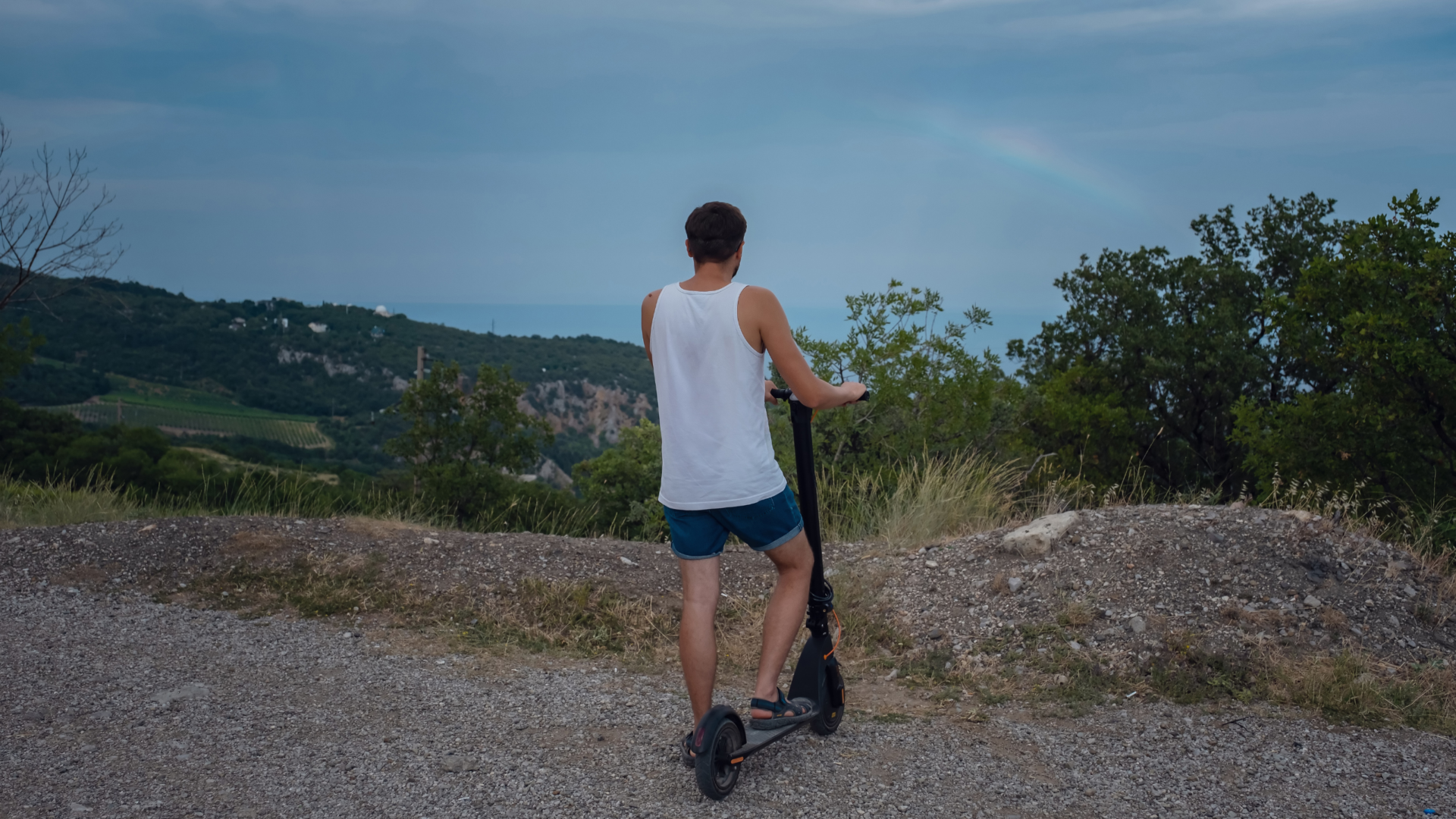
Best Electric Scooters for Hills
When it comes to tackling hilly terrain, some electric scooters stand out due to their power, range, and overall performance. Below, we highlight the top scooters for hill climbing, based on extensive research and user reviews.
Model A: The Powerhouse
Known for its robust performance and resilience in steeper inclines, Model A is a top contender.
- Motor Power: 1000W motor ensuring smooth climbs and high top speed.
- Battery Life: 52V, 18.2Ah battery providing a range of up to 40 miles.
- Suspension System: Dual suspension for enhanced comfort on uneven surfaces.
- Weight Capacity: Can support up to 265 lbs, accommodating various riders.
- Additional Features: LED lights for safety and regenerative braking for extended battery life.
Model B: The Long Ranger
If you need a scooter that can go the distance, Model B excels in battery range and climbing capacity.
- Motor Power: Efficient 800W motor, designed for long commutes and steep terrain.
- Battery Life: 48V, 20Ah battery offers a range of up to 50 miles.
- Suspension System: Advanced dual suspension to handle off-road conditions.
- Weight Capacity: Supports riders up to 250 lbs.
- Additional Features: A full LCD display for easy monitoring is equipped with powerful front and rear lights.
Model C: The Lightweight Champion
Model C is perfect for those who prefer a lightweight yet powerful scooter.
- Motor Power: 600W motor, providing a balance of power and portability.
- Battery Life: 36V, 15.6Ah battery, offering a range of up to 30 miles.
- Suspension System: Front suspension for a smoother ride on moderate inclines.
- Weight Capacity: Can support up to 220 lbs, lightweight design aids in handling.
- Additional Features: Quick folding mechanism for easy transportation and storage.
Model D: The All-Terrain Expert
For those who need versatility and rugged performance, Model D stands out.
- Motor Power: Dual 500W motors offering a combined 1000W power.
- Battery Life: 52V, 23Ah battery, ensuring a range of up to 45 miles.
- Suspension System: All-wheel suspension for tackling gravel and rough paths.
- Weight Capacity: Suitable for riders up to 280 lbs.
- Additional Features: Off-road tires for better grip and stability, integrated horn for added safety.
Model E: The Commuter’s Favorite
Ideal for daily commutes on hilly terrain, Model E offers a well-rounded performance.
- Motor Power: 750W motor, providing ample power for urban environments.
- Battery Life: 48V, 17.5Ah battery, with a range of up to 35 miles.
- Suspension System: Rear suspension for improved comfort during rides.
- Weight Capacity: Supports up to 240 lbs, balancing power and portability.
- Additional Features: LED display for real-time stats, regenerative braking for enhanced efficiency.
These models represent the best in class for hill climbing scooters. Each offers a unique set of features tailored to different needs, from powerful motors to long-range batteries and advanced suspension systems. Next, we explore important details on motor power and torque crucial for hill climbing.
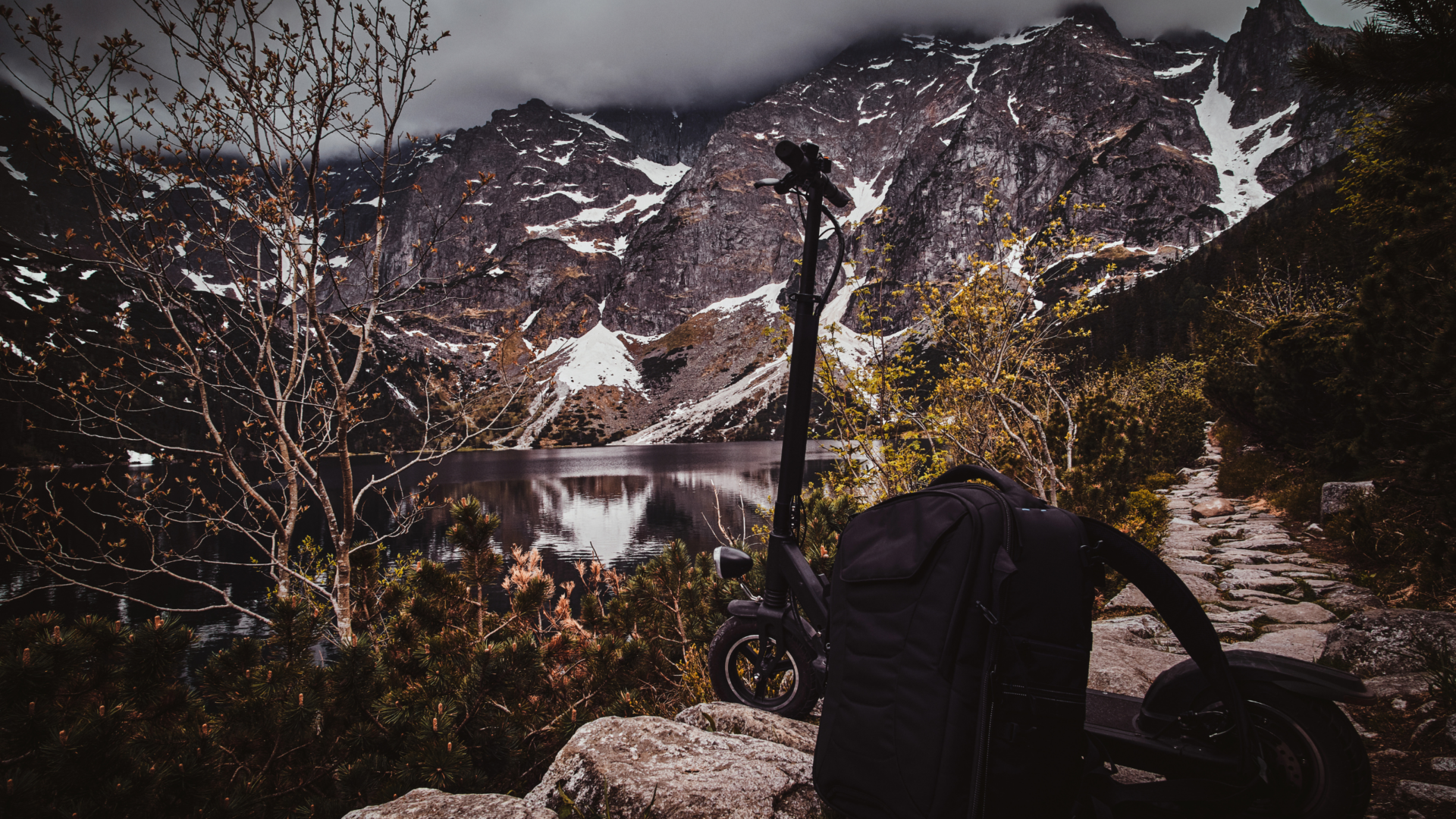
Electric Scooter Motor Power and Torque for Hills
When it comes to climbing hills, motor power and torque are two critical factors that determine an electric scooter’s performance. Understanding these elements will help you choose a scooter capable of conquering those steep inclines and rugged terrains effectively.
Motor Power
Motor power is measured in watts (W). This rating indicates the motor’s power output.
- Minimum Requirement: For hill climbing, look for scooters with at least 500W of motor power. This ensures the scooter can handle moderate inclines without losing speed.
- High-Power Motors: Scooters with 800W to 1000W motors or more are ideal for steeper hills. These motors provide better acceleration and maintain higher speeds even on challenging inclines.
- Dual Motors: Some high-end scooters feature dual motors, offering combined power and improved performance on both flat and hilly terrains.
Torque
Torque is a measure of the twisting force that causes rotation, which is crucial for starting from a standstill and climbing hills.
- High Torque for Inclines: Scooters with higher torque can accelerate more quickly and tackle steep slopes more efficiently. Higher torque is often found in scooters with more powerful motors or specially designed hill-climbing models.
- Torque Ratings: While exact torque measurements can vary, scooters designed for uphill rides usually emphasize high torque in their specifications. Look for mentions of enhanced hill-climbing capabilities or higher Newton-meter (Nm) values.
Electric Scooter Climbing Angle
The climbing angle refers to the steepest hill the scooter can climb, measured in degrees.
- Moderate Terrain: Scooters capable of climbing angles up to 15 degrees are suitable for most urban and suburban environments.
- Steep Hills: For more challenging terrain, look for scooters that can handle climbing angles of 20 degrees or more. High-power and high-torque models usually offer these capabilities.
Real-World Performance
While specifications are helpful, real-world performance may vary based on rider weight, battery condition, and environmental factors.
- Rider Weight: Heavy riders may experience reduced performance on hills. Ensure the scooter’s weight capacity is appropriate for your needs.
- Battery Health: A well-maintained battery will provide plenty of power output on a consistent basis. Regularly check and maintain your scooter’s battery for optimal performance.
- Environmental Conditions: Wet or slippery surfaces can affect traction and stability. Choose a scooter with a good tire grip and suspension for better handling.
Understanding the importance of motor power and torque helps you make an informed decision when selecting electric scooters for hills. Up next, we’ll delve into battery life and range, ensuring you have the endurance needed for those uphill journeys.
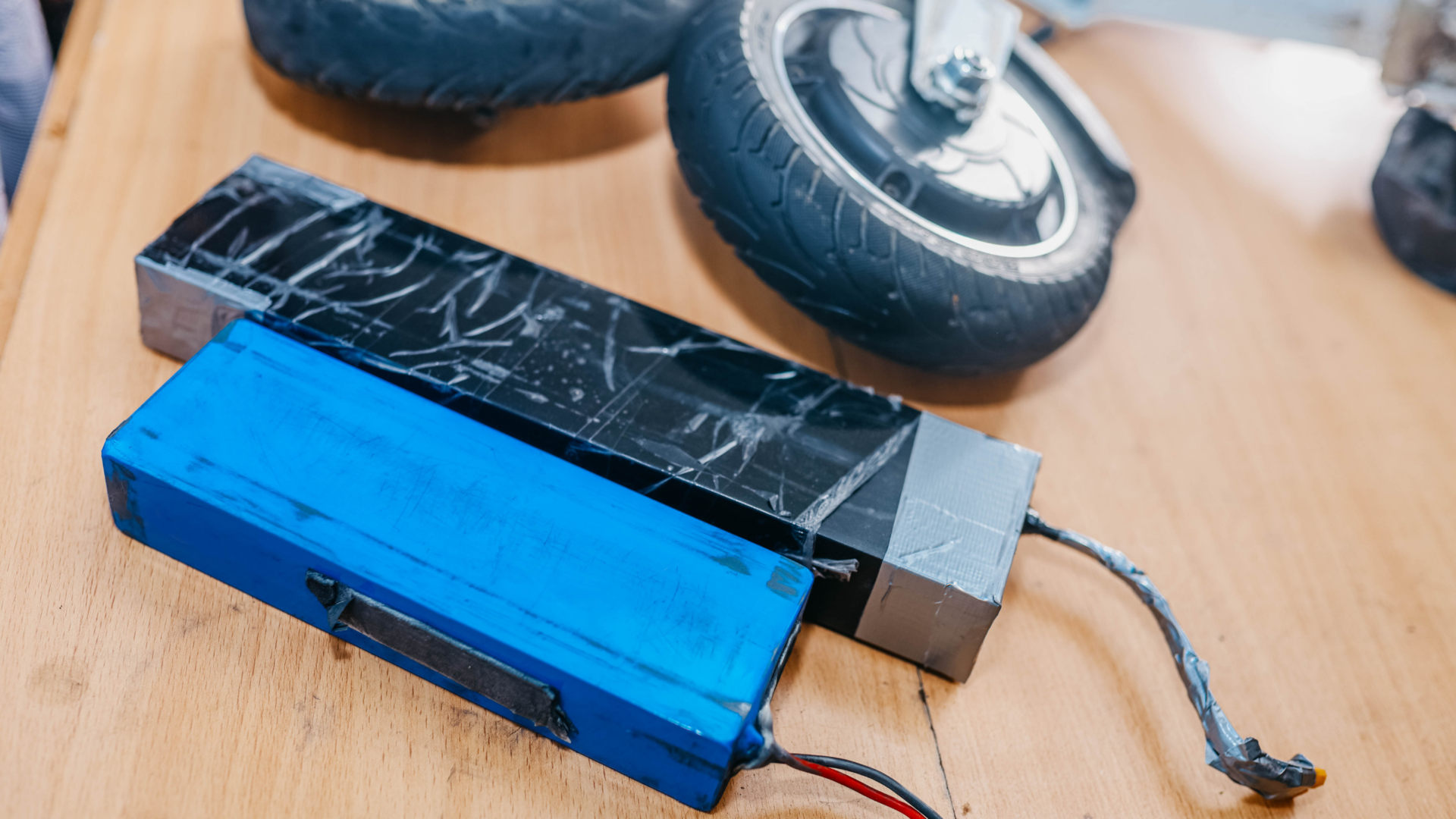
Battery Life and Range for Hill Climbing Electric Scooters
Battery life and range are crucial considerations when choosing an electric scooter for hills. These factors determine how far and how long you can ride without needing a recharge, especially on energy-draining inclines. Here’s what you need to know:
Battery Capacity
The capacity of an electric scooter’s battery is typically measured in Watt-hours (Wh) and impacts its overall range.
- High Capacity Batteries: Look for scooters with batteries that offer higher capacity, usually 500Wh and above. This ensures you have ample hill-climbing power for longer distances.
- Range Variability: Battery capacity can range from 300Wh to 1000Wh or more, with higher capacities offering longer ride times between charges.
Range
The range of an electric scooter indicates the distance it can travel on a single charge.
- Long-Range Models: For hill climbing, it’s advisable to choose scooters with a range of 20 miles (32 km) or more. This ensures you can handle long, hilly commutes without worrying about running out of power.
- Manufacturer Specifications: Always check the manufacturer’s stated range, but remember that actual performance can vary based on terrain, rider weight, and riding style.
Regenerative Braking
Regenerative braking can extend battery life and enhance overall efficiency.
- Energy Recovery: Regenerative braking systems capture some of the energy produced during braking and convert it back into battery power. This is particularly useful on downhill stretches, where braking occurs frequently.
- Extended Range: While it won’t dramatically increase your range, regenerative braking can add a few extra miles and maintain battery health over time.
Factors Affecting Battery Life and Range
Several factors influence the real-world range and battery life.
- Rider Weight: Heavier riders consume more energy, reducing the scooter’s range. Ensure your chosen model supports your weight capacity comfortably.
- Terrain: Consistent riding on hilly or rough terrain depletes the battery faster than flat, smooth surfaces.
- Speed and Riding Style: High speeds and aggressive riding, including frequent starts and stops and quick acceleration, can drain the battery more quickly.
- Weather Conditions: Cold weather can reduce battery efficiency. Riding in extreme temperatures may impact performance and range.
Optimizing Battery Performance
Proper maintenance and optimized usage can prolong battery life and maximize range.
- Regular Charging: Charge the battery regularly to keep it in good condition. Avoid letting it fully discharge frequently.
- Quality Charger: Use the recommended charger to ensure safe and efficient recharging.
- Storage: Store your scooter in a cool, dry place to protect the battery from extreme temperatures and moisture.
Understanding battery life and range is vital when selecting an electric scooter capable of handling hills. These insights will help you choose a model that meets your requirements for longer, uninterrupted rides. Next, we’ll discuss maintenance tips to keep your scooter in optimal condition.
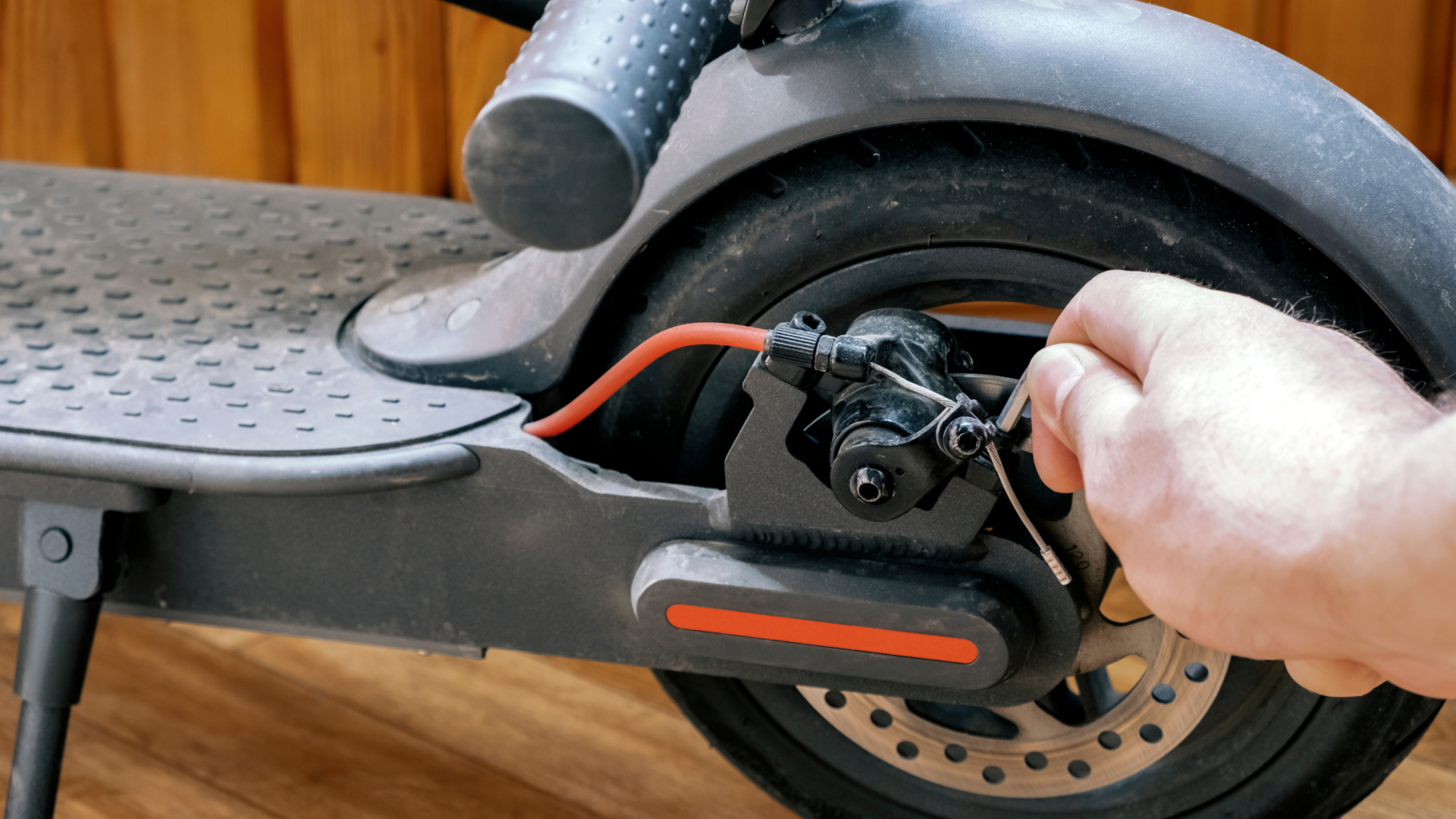
Maintenance Tips for Hill-Climbing Electric Scooters
Proper maintenance is crucial for ensuring the longevity and performance of your hill-climbing electric scooter. Regular upkeep helps you avoid unexpected breakdowns and keeps your scooter in top condition for tackling challenging terrains. Here are some essential maintenance tips:
Regular Inspections
Perform routine checks to identify any wear or damage early on.
- Tires and Wheels: Inspect for punctures, wear, and tear. Maintaining proper tire pressure ensures better grip and control, especially on hills.
- Suspension: Check the suspension system for any signs of wear or damage. Proper suspension ensures a smooth ride and absorbs shocks effectively.
- Proper Brakes: Regularly test both disc and regenerative brakes for optimal hill-climbing performance. Worn-out brake pads should be replaced immediately to ensure safety.
Battery Maintenance
Proper battery care extends its life and maintains performance.
- Regular Charging: Charge the battery after each ride to keep it at optimal levels. Avoid letting it fully discharge frequently.
- Use Recommended Charger: Always use the charger provided by the manufacturer. Using incompatible chargers can damage the battery.
- Temperature Considerations: Charge and store the battery in a cool, dry place. Extreme temperatures can degrade battery performance and lifespan.
Cleaning and Lubrication
Keeping your scooter clean and well-lubricated prevents rust and ensures smooth operation.
- Regular Cleaning: Wipe down your scooter after each ride, especially if you’ve been riding on wet or muddy terrain. Use a damp cloth to clean the surface and avoid soaking electrical components.
- Lubricating Moving Parts: Apply lubricant to the chain, bearings, and other moving parts regularly. This reduces friction and wear, ensuring smoother rides.
Firmware and Software Updates
Keep your scooter’s software up-to-date for enhanced performance and new features.
- Regular Updates: Check the manufacturer’s website for firmware updates. These updates can improve battery management, motor efficiency, and overall ride experience.
- Consult User Manual: Refer to the user manual for instructions on how to update the firmware or software of your electric scooter.
Storage and Handling
Proper storage and handling extend the lifespan of your scooter.
- Indoor Storage: Store your scooter indoors or in a covered area to protect it from the elements. Exposure to rain and extreme temperatures can cause damage.
- Fold and Unfold Carefully: If your scooter is foldable, make sure to fold and unfold it carefully to avoid damaging the locking mechanisms and hinges.
Periodic Professional Check-Ups
Consider professional maintenance for thorough check-ups and repairs.
- Annual Servicing: Take your scooter to a professional mechanic or service center at least once a year. They can perform comprehensive checks and address any potential issues.
- Specialist Repairs: For complex repairs or replacements, always consult a specialist to ensure your scooter is correctly serviced for safe operation.
By following these maintenance tips, you can ensure your hill-climbing electric scooter remains reliable, safe, and efficient. Proper care and regular checks will help you tackle any slope with confidence. Next, we’ll conclude with key thoughts on finding your ideal hill-climbing electric scooter.
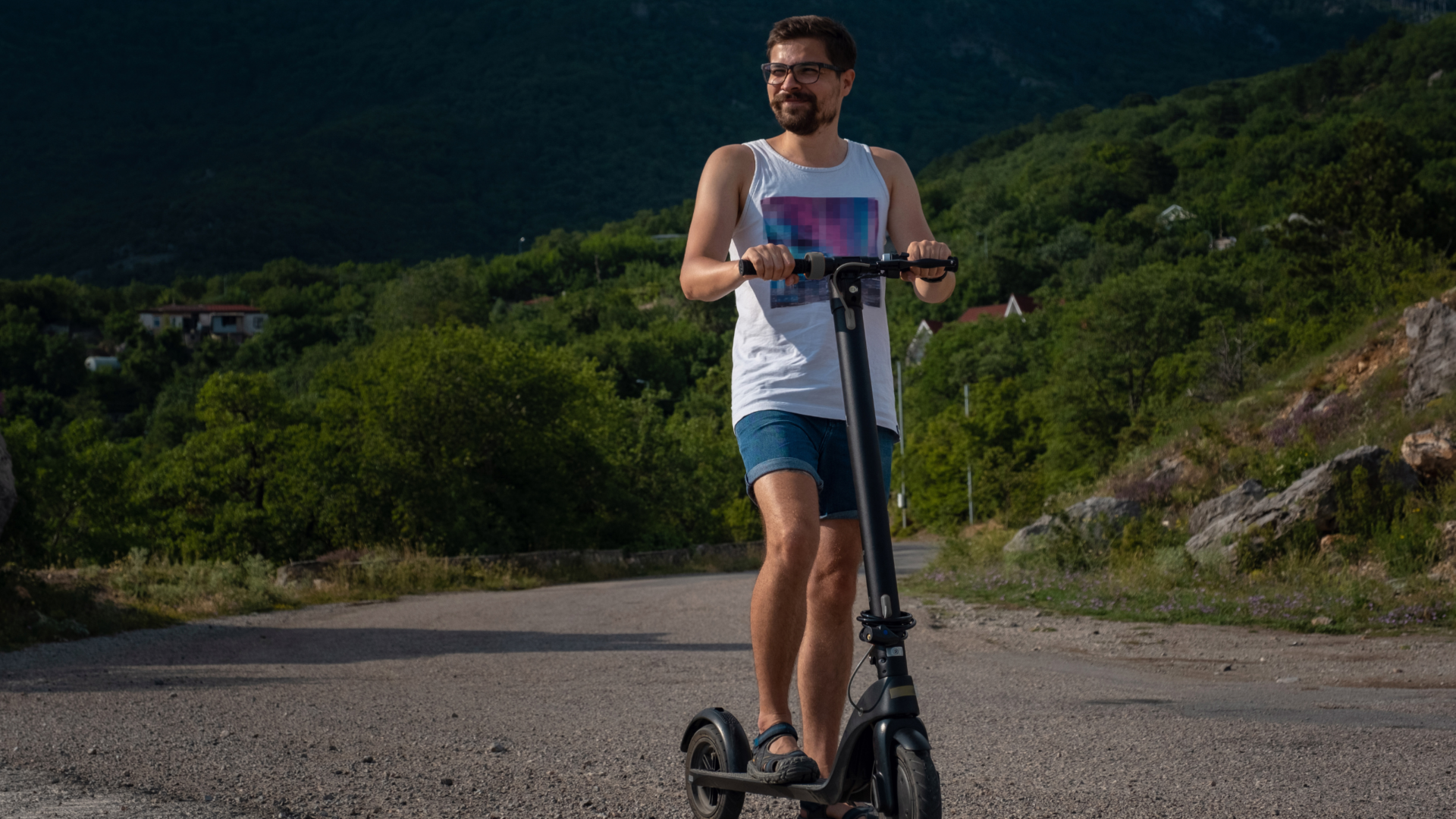
Conclusion: Finding Your Ideal Hill-Climbing Electric Scooter
Choosing the right electric scooters for hills requires careful consideration of multiple factors, from motor power and torque to battery life and maintenance. By focusing on these key elements, you can ensure that your scooter not only tackles the steepest inclines but also provides a comfortable and reliable ride.
Summarizing Key Features
To find the best electric scooter for hills, prioritize models that offer:
- Powerful Motors: Aim for at least 500W, but preferably 800W or more, to handle steep inclines.
- High Torque: Essential for better acceleration and maintaining speed on slopes.
- Long Battery Life and Range: Look for scooters with high-capacity batteries that offer a range of at least 20 miles.
- Effective Suspension: Quality suspension systems provide a smoother ride on rugged terrains.
- Robust Build Quality: Ensure the scooter is made from durable materials and can support your weight comfortably.
- Advanced Safety Features: Comprehensive braking systems and adequate lighting are crucial for safety.
Top Recommendations
Our top choices for hill-climbing electric scooters include:
- Model A: Known for its powerful 1000W motor and long range, perfect for steep hills.
- Model B: Offers a balanced mix of power, range, and suspension, ideal for long commutes.
- Model C: A lightweight yet robust option suitable for both urban and off-road conditions.
- Model D: Excellent for all-terrain adventures with dual motors and advanced suspension.
- Model E: Favored by commuters for its reliability and well-rounded features.
Regular Maintenance
Maintaining your scooter is key to its longevity and performance:
- Routine Inspections: Regularly check tires, brakes, and suspension for wear and tear.
- Battery Care: Charge regularly and store properly to extend battery life.
- Cleaning and Lubrication: Keep moving parts clean and well-lubricated for smooth operation.
- Professional Servicing: Annual check-ups by specialists can prevent major issues and keep your scooter in top shape.
Final Thoughts
Finding the best electric scooters for hills involves balancing power, performance, and durability. By considering the features and recommendations provided in this guide, you can make an informed decision and find a model that suits your specific needs and riding style. Whether you’re commuting daily or exploring off-road trails, the right scooter will make your uphill journeys smooth and enjoyable.
Get ready to conquer any slope with confidence and enjoy the freedom and exhilaration that come with hill climbing on a top-tier electric scooter!